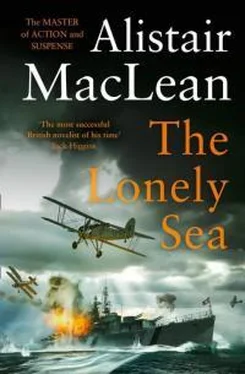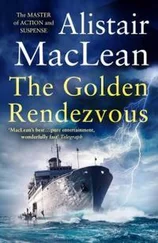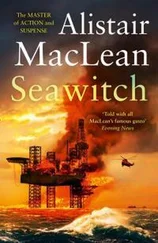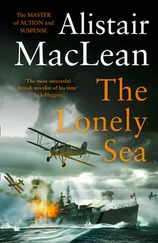‘Nightmarish’ is the only word to describe the dreadful scenes now taking place aboard that battered, holed and flaming shambles of twisted steel and broken bodies that was all that was left of the Bismarck and its crew.
Sixteen-inch shells from the Rodney, by this time at a point-blank range of only two miles, were now hitting the Bismarck two, four, even six at a time, and groups of fear-maddened men on the upper deck were running blindly backward and forward like crazed animals seeking escape from the twin terrors of these lethal broadsides and the red-hot deck-plates beginning to twist and buckle under their very feet: most of them chose the easy way out, a leap into the shell-torn sea and death by drowning.
In the turrets, sailors abandoned their now useless guns, mutinied and rushed for the turret doors. Some of the commanding officers of the turrets committed suicide, and others turned pistols on their own men, only to be overwhelmed: and then, the men found that the doors were warped and jammed fast, and they went down to the floor of the Atlantic locked in the iron coffin of the turret they had served so well.
Hatches, too, jammed shut all over the Bismarck. Two hundred men, imprisoned thus in the canteen, were fighting madly to force their way out, when a shell crashed through the deck and exploded inside, all the concussive blast and murderous storm of flying shrapnel confined to that one narrow space. There were no survivors.
But they were the lucky ones in the manner of their dying – lucky, that is, compared to the ghastly fate of the sailors trapped in magazines. Raging fires surrounded these magazines on nearly every side, and as the metal bulkheads grew steadily hotter until they began to glow dull red, the magazine temperatures soared. That this could have only one end the few damage control men still clinging to their posts knew all too well – and they could never forget the Hood blown out of existence when her magazines went up. They had no option but to do what they had to do – flood the magazines and drown their comrades in the swiftly rising waters.
And just as nightmarish as the scenes aboard was the appalling spectacle of the Bismarck herself. Weighed down by the thousands of tons of water rushing in through the great gaps torn in her sides, she rolled heavily, sluggishly, in the troughs between the waves, a battered, devastated wreck.
Her mast was gone, her director tower was gone, the funnel had just disappeared. All her boats had been destroyed, the smashed and broken turrets lay over at crazy angles, the barrels pointing down into the sea or up towards an empty sky, and the broken, twisted steel girders and plates of what had once been her superstructure glowed first red, then whitely incandescent as the great fires deep within blazed higher and higher. But still the Bismarck did not die.
Beyond all question, she was the toughest and most nearly indestructible ship ever built. She had been hit by the Prince of Wales, she had been hit by hundreds of heavy, armour piercing shells from the King George V, Rodney, Norfolk and Dorsetshire. She had been torpedoed by aircraft from the Ark Royal and from the Victorious, and now, in this, her last battle, torpedoed also by the Rodney and the Norfolk. But still, incredibly, she lived. No ship in naval history had ever taken half the punishment the Bismarck had, and survived. It was almost uncanny.
In the end, she was not to die under the guns of the two British battleships that had reduced her to this empty blazing hulk. Perhaps, in their wonder at her incredible toughness, they had come to believe that she could never be sunk by shell-fire. Perhaps it was their dangerous shortage of fuel, or the certainty that U-boats would soon be on the scene, in force: or perhaps they were just sickened by the slaughter. In any event, the King George V and the Rodney, their mission accomplished, turned for home.
The Bismarck never surrendered. Her colours still flew high, were still flying when the Dorsetshire closed in on the silent, lifeless ship and torpedoed three times from close range. Almost at once she heeled far over to port, her colours dipping into the water, then turned bottom up and slid beneath the waves, silent except for the furious hissing and bubbling as the waters closed over the red hot steel of the superstructure.
The long chase was over: the Hood was avenged.
The English Channel, during the years 1939-1945, was the setting for countless extraordinary and sometimes, during the invasion summer of 1944, frankly incredible spectacles; but it can safely be said that at no time in the war did it present a sight more astonishing, incongruous and utterly improbable than that to be seen on a night in late July in the year 1940, some 60 miles off the Isle of Wight.
This sight was a ship, just an ordinary 6,000-ton cargo and passenger liner, but it was behaving in a most extraordinary fashion. One could have looked at it, then looked again, and still have been excused for flatly disbelieving the plain evidence before one’s eyes. During the hours of darkness in the wartime Channel secrecy, stealth, and above all an absolutely enforced blackout, were the essentials without which there was no hope of survival. One careless chink of escaping light, one thoughtlessly struck match or cigarette end glowing in the darkness, and the chances were high that a U-boat’s periscope or torpedo boat’s bows lined up and locked on the betrayed bearing.
Yet there was light to be seen aboard this ship. Not just one light, but hundreds of them. It was as if a section of the Blackpool illuminations had been transferred en bloc to the middle of the Channel. Every blackout scuttle had been removed, and the lights behind the portholes switched on. The lights on deck and on the superstructure blazed. The bridge was floodlit. Powerful projectors lit up the name and nationality marks painted on either side of the hull, while another illuminated the big flag painted on the deck. Finally, two powerful searchlights were trained on the tricolour flag that fluttered high above the stern.
The night was fairly calm, the sky clear, visibility good: the brilliantly illuminated vessel must have been clearly visible over at least 500 square miles of the Channel and over 10 times that area for any plane cruising overhead.
The ship was the Meknes, owned by the Compagnie Générale Transatlantique, and she had excellent reason for this blatant self-advertisement. Or at least, tragically, so it was imagined at the time.
The Meknes was en route from Southampton to Marseilles with 1,180 French naval officers and ratings, mostly reservists who had served aboard a French battle-cruiser until the fall of their country, then transferred to Britain. They had since elected to return to their own country. Marseilles, at that time, was technically a neutral port, and these repatriates were non-combatants: the French Vichy Government, under the aged Marshal Pétain, had just concluded a separate peace with Germany. The French repatriates, therefore, were entitled to be regarded as neutrals, and afforded the protection that international law demands for neutrals. Accordingly, the British Government had informed Vichy of the repatriation, with instructions that the Germans be advised and asked to provide a safe conduct. Precautions would be taken, the British added, to ensure that there would be no mistaking her identity.
And there most certainly was no mistaking her identity, when the Meknes left Southampton at 4.30 p.m., cleared the Isle of Wight, and steamed down the Channel at fifteen knots.
Читать дальше












